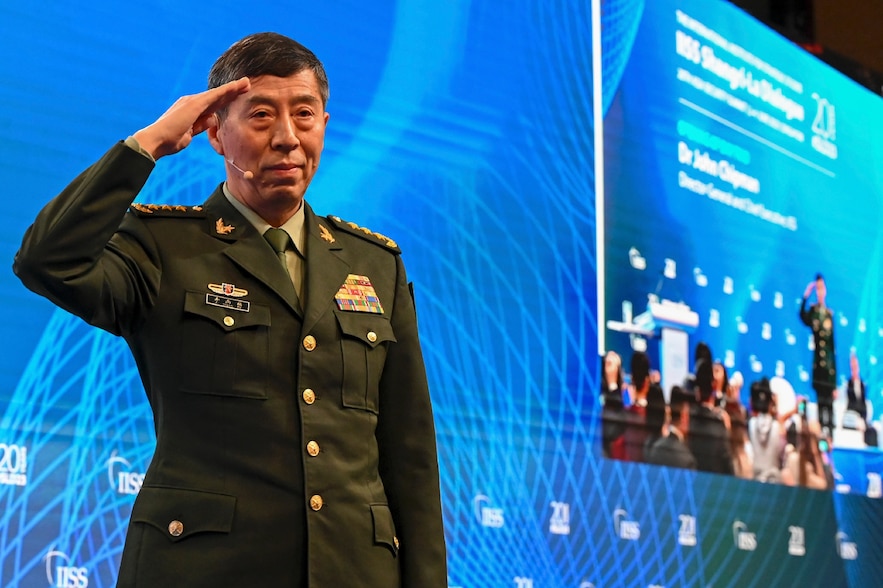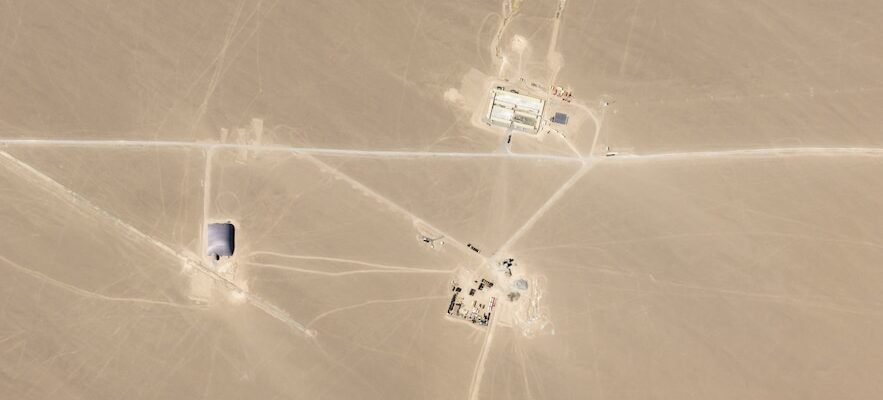The end of the Cold War had removed from the minds of Europeans the risk of apocalypse posed by nuclear weapons, which had long been part of their daily lives. The threats made by the Russian president with the invasion of Ukraine have reintroduced it abruptly. This is not the only symptom of a shift into a new era. The Russian-American bipolarity is being challenged by China, whose arsenal continues to grow in opacity. New “endowed” powers are emerging: North Korea, already; Iran if it decides, and other states, tomorrow, if they see it as the only way to ensure their survival. In 1964, the director Stanley Kubrick titled his satirical film Dr. Strangelove: How I Learned to Stop Worrying and Love the BombThis “mad love” has taken over the world and complicates the game of powers.
EPISODE 1 – Nuclear weapons, the bidding war: how Ukraine had to give up its bomb
EPISODE 2 – Putin and the nuclear bomb: the risk of apocalypse
Layers of reeds and earth, each mixed with gravel, all covered with clay. On the edge of Gansu, tourists can admire the westernmost section of the Great Wall, more than two millennia old. It will be difficult for them to approach, however, the other monumental military work that is housed, in its most desert part, this vast province. To the west of the city of Yumen, China built at the beginning of the decade a field of more than 120 silos, capable of housing its DF-41 intercontinental nuclear missiles, whose range of more than 12,000 kilometers places Los Angeles and Washington under threat.
These are not the only silos dug in recent years. A second field, near the city of Hami, in Xinjiang, has 110, and a final 90, near Yulin, in Inner Mongolia – more than 320 silos compared to about twenty in 2020, more than Russia. Using satellite images, Independent experts from the Federation of American Scientists (FAS) followed the progress of the construction sites week after week, under inflatable domes – similar to those that cover tennis courts –, sheltered from the wind, extreme temperatures… and from prying eyes. They noted their “almost perfect grid”, three kilometers from each other. A distance that prevents the destruction of two installations by a single nuclear strike.
According to the Federation of American Scientists (FAS), a collective of American researchers, these images taken in the fields of Xinjiang in 2021 show nuclear silos under construction.
© / AFP PHOTO /PLANET LABS, INC.
Driven by the ambition to become the world’s leading power, China is carrying out a colossal expansion of its nuclear arsenal. A report from the US Congress estimates that it already has more than 500 operational nuclear warheads and will “probably have more than 1,000 by 2030”. That is a possible tripling of its capabilities in just a decade. Added to this is a naval component, which could increase to eight JL-3 nuclear-powered ballistic missile submarines.
Officially, China assures that its doctrine has remained the same for sixty years: that of “no first use” of a strictly defensive nuclear weapon. But, for some, this minimal deterrence is no longer relevant. “The observed expansion announces a change in posture,” considers Hans Kristensen, director of the FAS. It is difficult to know which one; this atomic development program, in quantity and quality, is conducted in the most total opacity.
Xi Jinping dissatisfied with “pitch force”
“One possibility is that since the Trump administration’s trade war, China is assessing that the likelihood of conflict with the United States has increased and that it needs to invest more in its nuclear forces,” says Ankit Panda, a proliferation specialist at the Carnegie Endowment for International Peace. “Another is that it is ending a high level of vulnerability that it has tolerated for too long.” This also means that it has more options for a graduated response, in the form of limited nuclear attacks, in the event of an atomic confrontation. “Another possibility is that Beijing may consider that such an arsenal is more likely to dissuade an American president from risking nuclear strikes to defend Taiwan,” continues Ankit Panda. “But all this is purely speculative, because we don’t know what Xi Jinping thinks.”

Chinese Defense Minister Li Shangfu, seen here at a conference on June 4, 2023, in Singapore, has been fired.
© / afp.com/Roslan RAHMAN
On the other hand, we learned of the leader’s deep dissatisfaction with the “launcher force”. This branch of the People’s Liberation Army manages China’s land-based nuclear component. That is, the silos and mobile launchers. The Chinese president decapitated it last year with the arrest of several dozen of its officers and former high-ranking officers. Two former heads of this entity had been promoted to Defense Ministers: Li Shangfu and his predecessor from 2018 to 2023, Wei Fenghe. They disappeared from circulation overnight. Accused of corruption, they were excluded from the Communist Party.
A purge of this magnitude is unprecedented within the nuclear forces. “Officially, it is a matter of corruption and discipline, but it could just as well be a lack of loyalty to Xi Jinping,” said Marc Julienne, a China expert at the French Institute of International Relations. “It suggests significant operational failures.” Some missiles were reportedly filled with water instead of fuel, while silo lids were defective, according to an article in the agency. Bloomberg based on American intelligence. Whether true or not, a housecleaning from the top is underway: the Ministry of Defense has been entrusted to the former chief of staff of the Navy, Dong Jun, while his deputy, Wang Houbin, has taken over the “launcher force”, with a political commissar brought in from the air force.
The US is concerned about the total lack of transparency on the part of the Chinese. “For there to be a balance of deterrence, there must be mutual predictability about planning and the objectives pursued, which is not the case today,” explains the former US Undersecretary for Arms Control, Rose Gottemoeller. “We must convince the Chinese to enter into negotiations to limit the deployment of nuclear weapons.” White House National Security Advisor Jake Sullivan said that Washington was ready to discuss “without preconditions.” An invitation declined by Beijing, determined to pursue a program that is set to upset the global balance.
.
